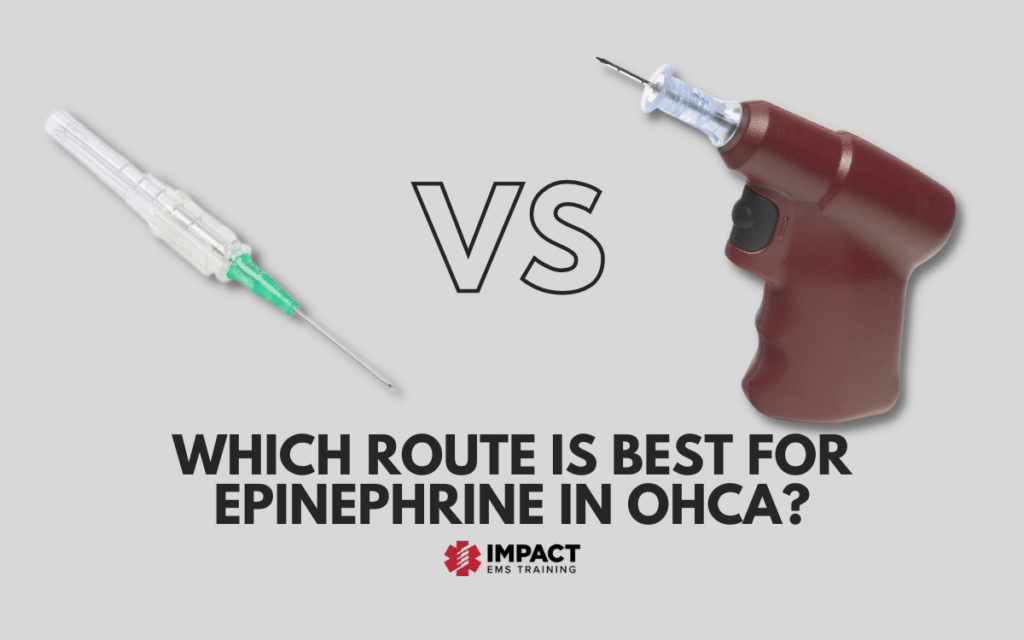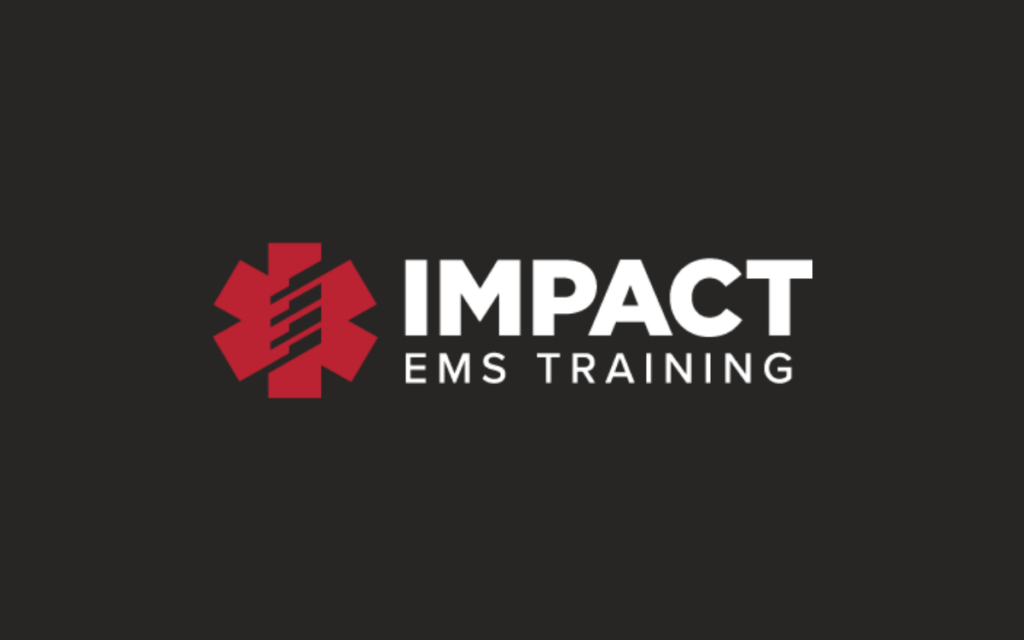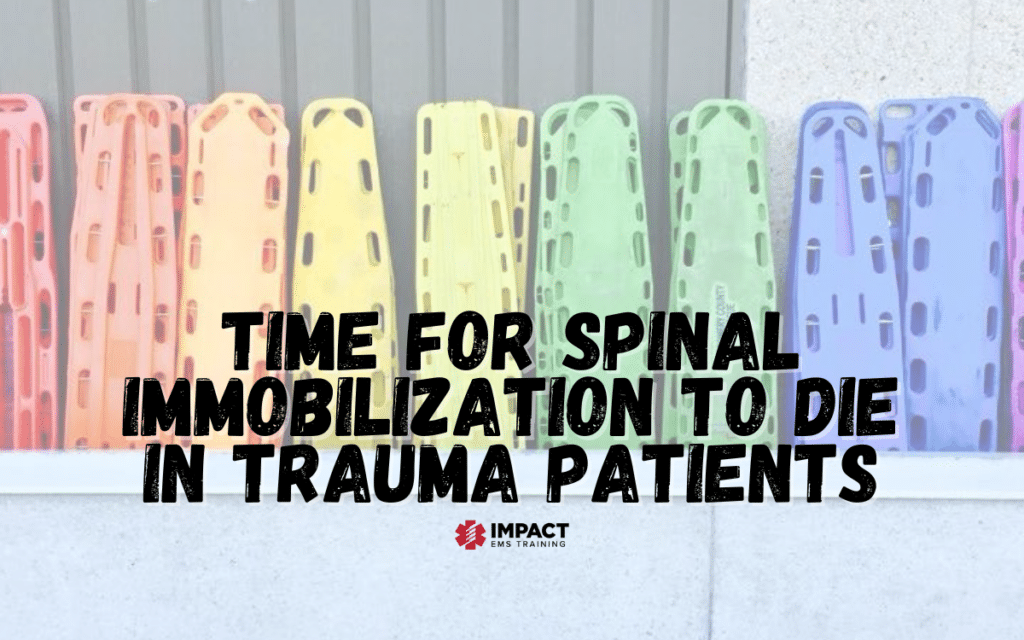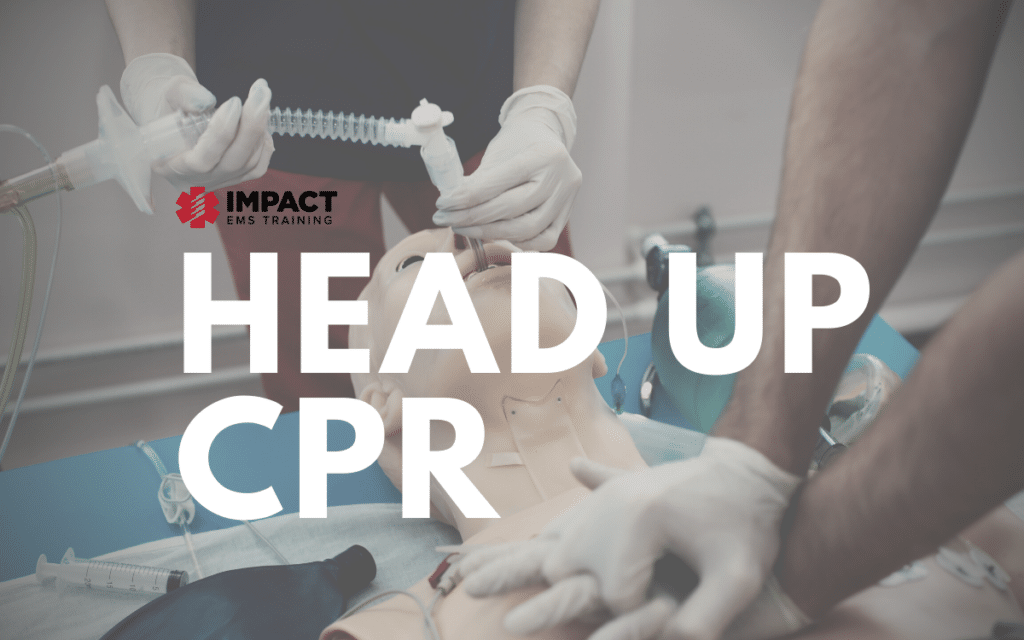PHANTASi Trial: Prehospital Antibiotics vs Sepsis

Background Antibiotics are one of the cornerstones of therapy in the treatment of sepsis/septic shock, however, according to the Surviving Sepsis Campaign (SSC) guidelines, time to antibiotics is a core measure, though there is weak evidence in support of this. Most of the evidence supporting this is based off retrospective studies that showed delays in […]
Which Route is Best for Epinephrine in OHCA?

Background Epinephrine remains a staple in cardiopulmonary resuscitation (CPR) in out-of-hospital cardiac arrest (OHCA). However, the optimal dose, timing, and route of administration are still unknown. Standard dosing of epinephrine is 1mg every 3 to 5 minutes via the intravenous (IV) or intraosseous (IO) route. IO lines are quicker to establish and have a higher […]
Do Palpable Pulses Correlate to Systolic Blood Pressure in Hypotensive Trauma Patients?

In Advanced Trauma Life Support (ATLS), we learned that a carotid, femoral, and radial pulse correlates to certain systolic blood pressure (SBP) in hypotensive trauma patients. Specifically, ATLS stated: Carotid pulse only = SBP 60 – 70 mmHg Carotid & Femoral pulse only = SBP 70 – 80 mmHg Radial pulse present = SBP >80 […]
The Death of MONA in ACS: Oxygen

by Salim R. Rezaie, MD Background: The first report for supplemental oxygen for angina was in 1900, and since then oxygen therapy has been a commonly used treatment of patients with ST-Elevation Myocardial Infarction (STEMI). The reason for this is the belief that supplemental oxygen will increase oxygen delivery to ischemic myocardium and help […]
Time for Spinal Immobilization to Die in Trauma Patients

Background: It has been common practice in trauma to place patients in cervical collars and on long backboards (LBBs) to achieve spinal immobilization. LBBs are used to help prevent spinal movement and facilitate the extrication of patients. Cervical collars (C-Collars) are used to help prevent movement of the cervical spine and often are combined with […]
In the Pipeline: Head Up CPR in OHCA?

Background: Head up (HUP) CPR is a new concept to me. The theory behind HUP is it allows for venous blood to drain from the brain to the heart thereby decreasing intracranial pressure and lowering the arterial/venous pressure waves which potentially could concuss the brain with each compression. Additionally, conventional CPR increases vascular pressure in […]
